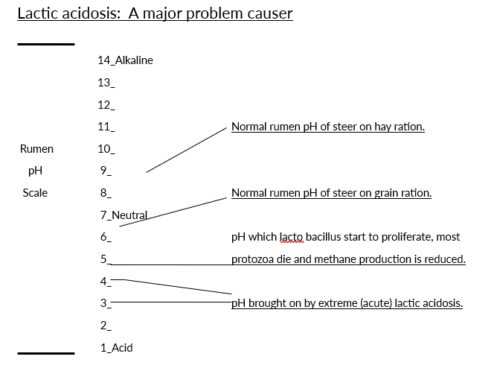Whole Corn Vs. Processed Corn for Feeding Cattle Diets
Posted: October 4, 2024 | Written By: Don Cleaver, Form-A-Feed

While the debate about whether certain cattle feeding diets can utilize whole corn has been settled many years ago, there is still much confusion.
Why do we suggest whole corn sometimes and processed corn at other times?
As a rule, the more forage that is in the diet, the more important it is to process the corn. This is due to physical factors such as rumination, fermentation processes, and rate of passage among others that impact starch digestibility. Since dairy cows and heifers, beef cows and growing calves, and some beef grow/finish diets forage levels are high, the suggestion is to process corn for best corn utilization.
That being said, there is a small subset of cattle that can utilize whole corn very well. They are feedlot cattle and calves. This is especially true with long fed cattle (170 days or more).
Ground, cracked, or flaked corn has more surface area for bacteria to work on. Whole grain chewed into a few large pieces has less surface area, so much of it passes through the rumen to the intestine before bacteria are able to break it down. The grain starch that passes to the intestine in cattle is then digested almost identical to the way it’s digested in the hog intestine.
Although 2 to 4% of the kernels pass through undigested, numerous research trials have shown efficiency of grain utilization is usually increased when grain is fed whole in low or no-roughage rations. That’s because the reduced risk of acidosis from the shift to whole shelled corn outweighs the smaller number of whole kernels that are not digested. Also, there is normal undigested grain starch present in manure when ground or cracked corn is fed, it’s just not as visible.
Some additional factors are necessary to make whole corn, low-roughage feeding work:
1) Protein and mineral supplementation must be designed to adequately fit the needs for the shift in digestion to the intestine and the higher potential rates of gain from less feed.
2) Feed bunk or feeder management is a must to ensure the cattle always have access to feed, so feed intake and digestion remains uniform. Thus, overloading the animal with grain for short periods of time should not occur.
3) Reduced opportunities for mold and easier to store and handle. This reduces processing and handling costs.
4) Holstein steers fed whole shell corn were followed to slaughter and the rumen content revealed that about 5% of the corn in the rumen was whole and the rest was split like rolled corn.
5) A summary of low-roughage trials show ADG – 6% advantage with whole corn and F:G – 4% advantage.
6) Reduced processing cost including shrink.
7) Roughage doesn’t have the right kind of energy for high gains.
8) Ground corn can impact in the rumen and damage the papilli.
Whole corn works within a certain range of moisture in the corn. Our studies put that range from 10% moisture to 24% moisture. Anything outside of these parameters requires the corn to be processed.
Whole corn vs. cracked or ground corn studies
Pennsylvania State University
Grinding dry shelled corn did not pay with cattle fed two pounds per head daily of alfalfa or grass hay.
University of Missouri-Columbia (from Agriculture publication G02054)
In general, corn between 14 and 19 percent in moisture is not improved by dry-rolling or grinding when fed in low roughage rations.
Panhandle Research and Extension Center, Nebraska
(As published in 2000 Nebraska Beef Report, pg. 38)
Feeding trials with growing-finishing cattle have seldom shown performance benefits for cracking dry corn compared to feeding it whole.
Lactic Acidosis
Ruminants seldom develop lactic acidosis on straight hay rations. Roughage in the form of hay — made up of cellulose, hemicellulose, lignin and silica is normally chewed and re-chewed by the animal and allowed to swell in the rumen fluid. The roughage is fermented in the rumen slowly by cellulolytic bacteria. The fluids formed in this process are well buffered by bicarbonate of soda, much of which is secreted in the saliva as the animal chews its cud.
Contrast this to a high level grain ration whereby grains are rapidly fermented by the streptococcus bovis with large resultant amounts of acid. These acids do not tend to be nearly as well buffered. As a result, when too much grain is introduced to the rumen too rapidly, pH drops to a lower than ordinary level and a different species of organism (lacto bacilli) becomes predominant and produces extremely low pH or acidity. This kills protozoa and cellulolytic bacteria, alters rumen bacteria balance and can cause either chronic or acute digestive disorders.
Keeping acidosis in check allows for more healthy days on feed resulting in better performance and feed efficiency.
Effects of Corn Particle Size on Ruminal pH
If you are rolling or grinding the corn you are feeding in a low or no roughage program, try whole corn, we are confident you will like the cattle’s performance. Contact a Certified Tend-R-Leen Marketing Partner to learn how to safely transition your cattle onto a whole corn and Tend-R-Leen diet.

